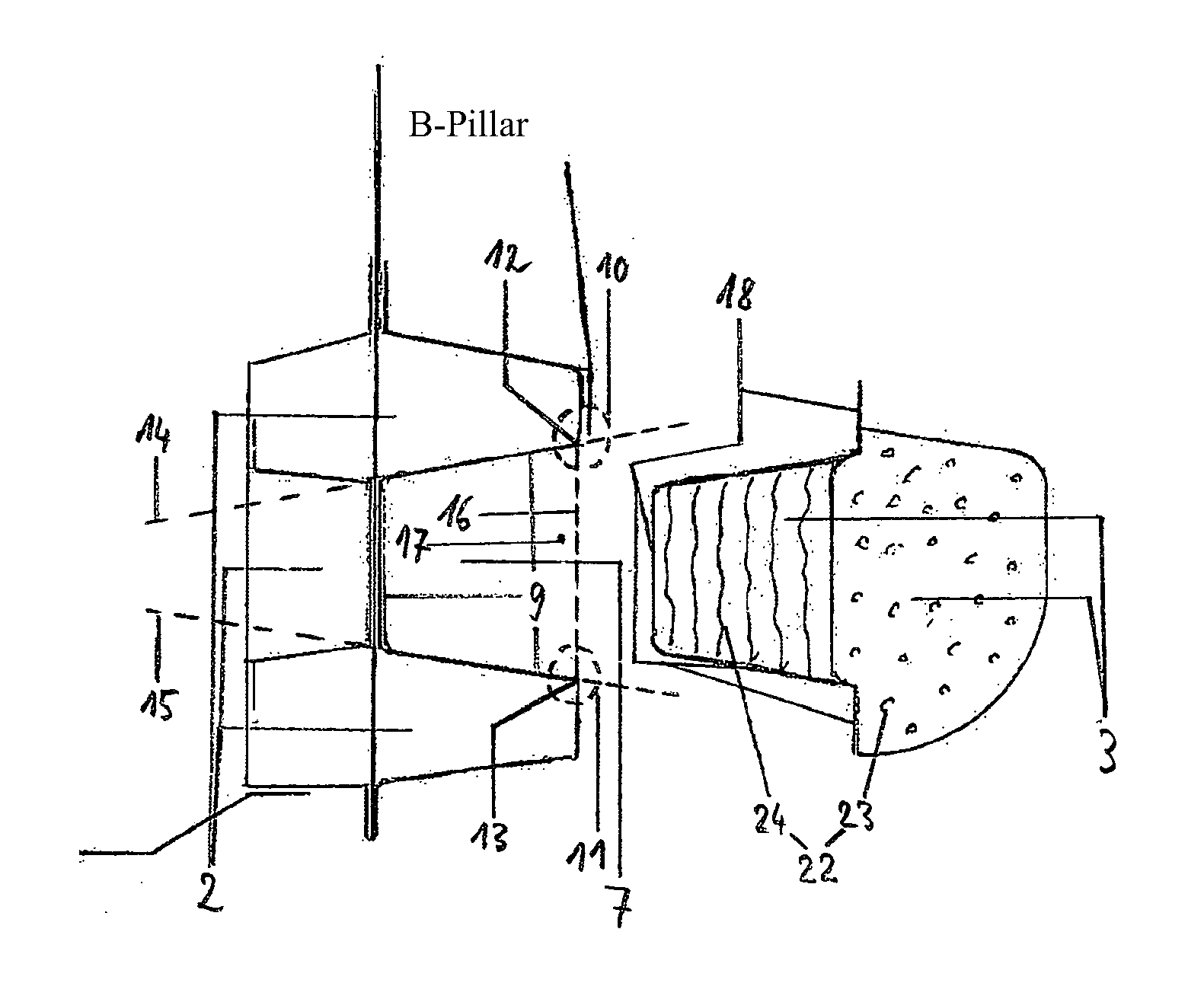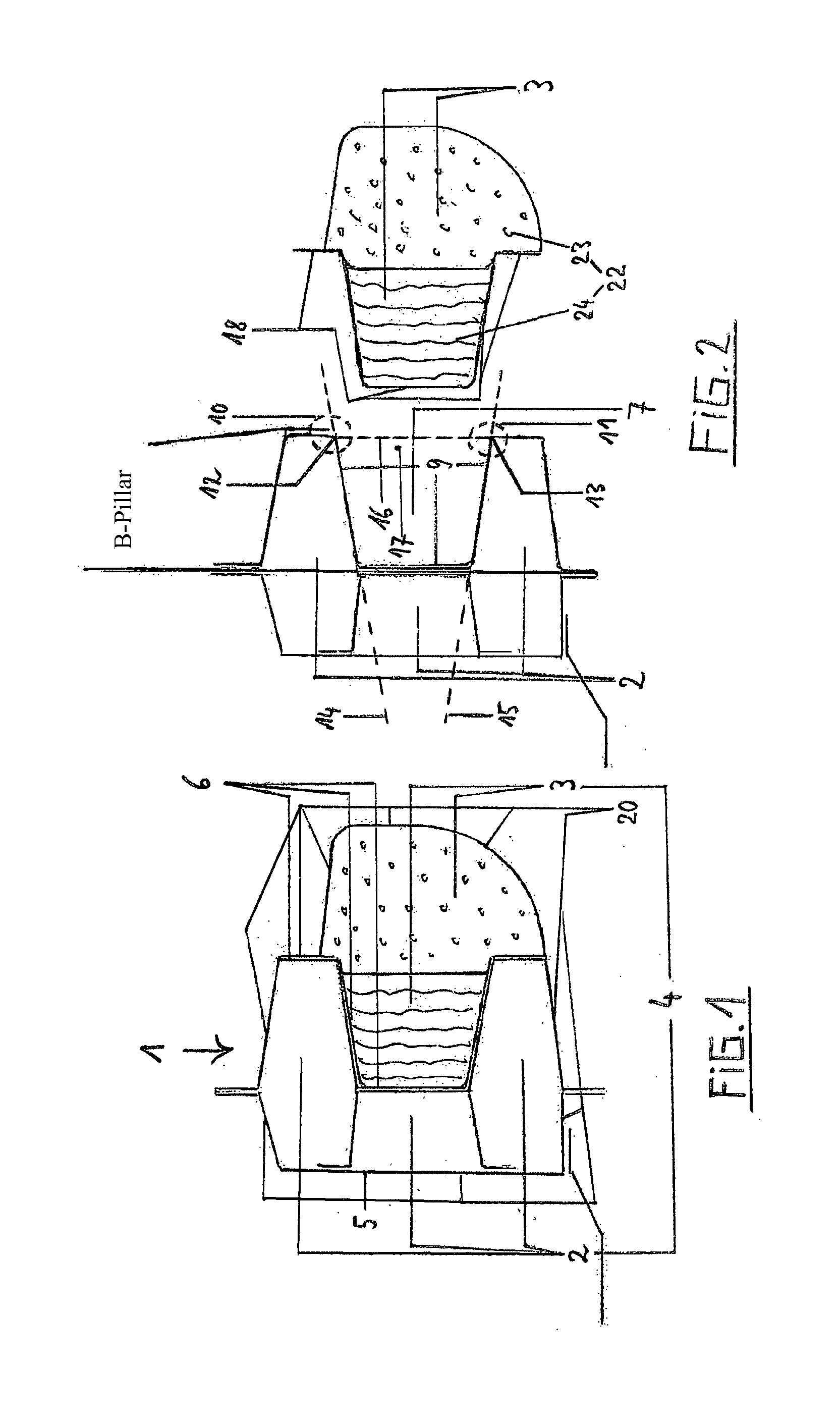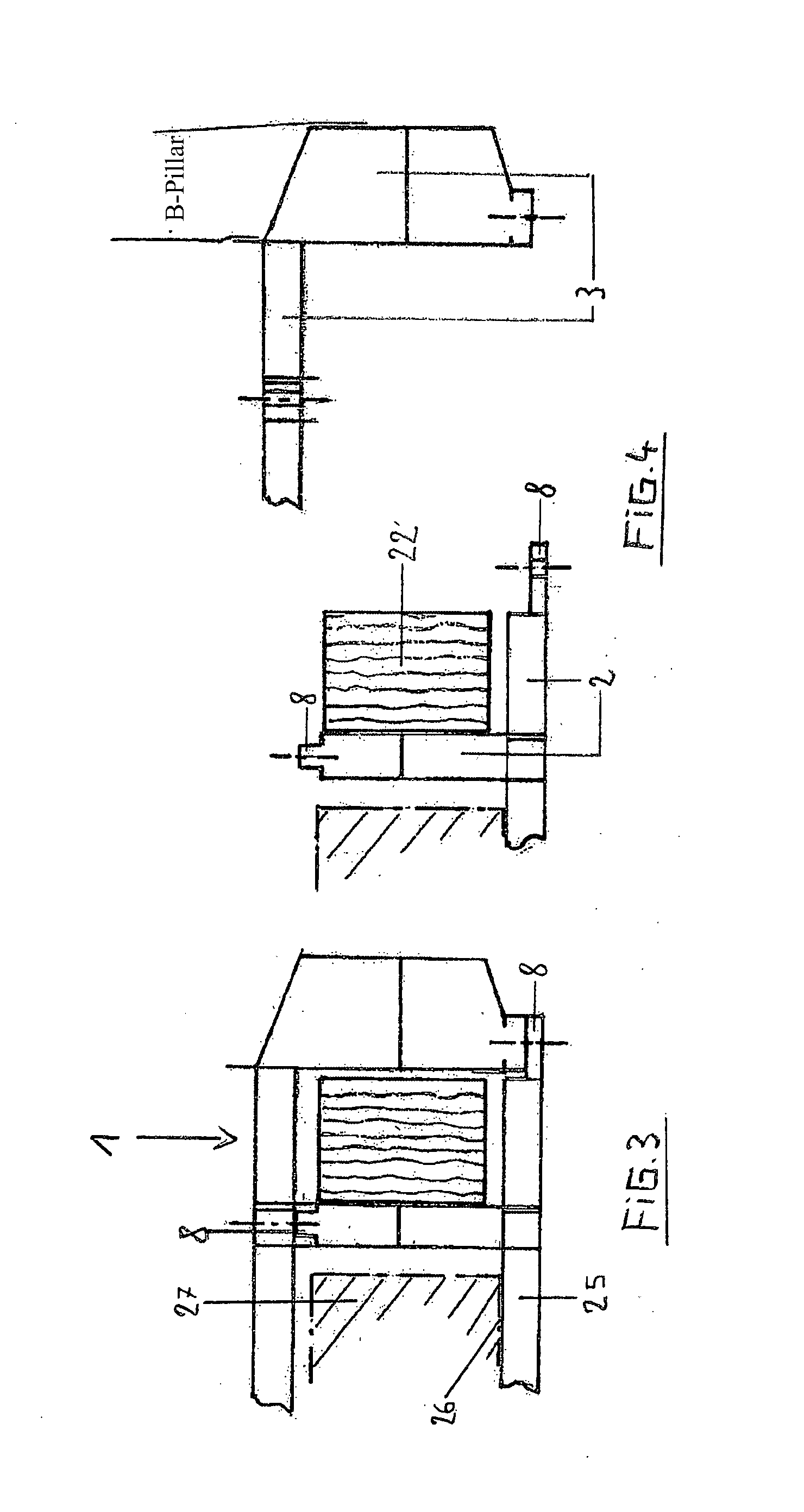Safety sill for a structural frame bearing a batter in the event of a side impact
a safety sill and structural frame technology, applied in the field of safety sills for structural frames, can solve the problems of limited material choice for load transmission elements, weight reduction cannot be achieved at the expense of body characteristics in terms of stability, and the inability to insertion load transmission elements after immersion paint coating, etc., to achieve the effect of reducing weight, saving materials, and expanding options
- Summary
- Abstract
- Description
- Claims
- Application Information
AI Technical Summary
Benefits of technology
Problems solved by technology
Method used
Image
Examples
Embodiment Construction
[0022]Below, preferred embodiments of the safety sill are explained in more detail with reference to the drawings.
[0023]FIG. 1 shows a cross section of a safety sill (1) that has been joined, by adhesive bonding, from a support element (2) mounted to the body-in-white and a mountable sill element (3). The diagram shows the inside (5) and the outside (6) of the support element (2), wherein the outside (6) in this exemplary embodiment comprises an almost U-shaped cavity (see FIG. 2, cipher 7). By joining the support element (2) with the sill element (3) a body member (4) is constituted that conforms with the safety sill (1), wherein the structural characteristics in this example predominantly result from the support element (2) and the part of the sill element (3), which part fills the cavity (see FIG. 2, cipher 7). The outer jacket surface of the safety sill forms the deformation contour (20), which can also be covered by means of a design panel that can optionally be affixed.
[0024]F...
PUM
 Login to View More
Login to View More Abstract
Description
Claims
Application Information
 Login to View More
Login to View More - R&D
- Intellectual Property
- Life Sciences
- Materials
- Tech Scout
- Unparalleled Data Quality
- Higher Quality Content
- 60% Fewer Hallucinations
Browse by: Latest US Patents, China's latest patents, Technical Efficacy Thesaurus, Application Domain, Technology Topic, Popular Technical Reports.
© 2025 PatSnap. All rights reserved.Legal|Privacy policy|Modern Slavery Act Transparency Statement|Sitemap|About US| Contact US: help@patsnap.com



